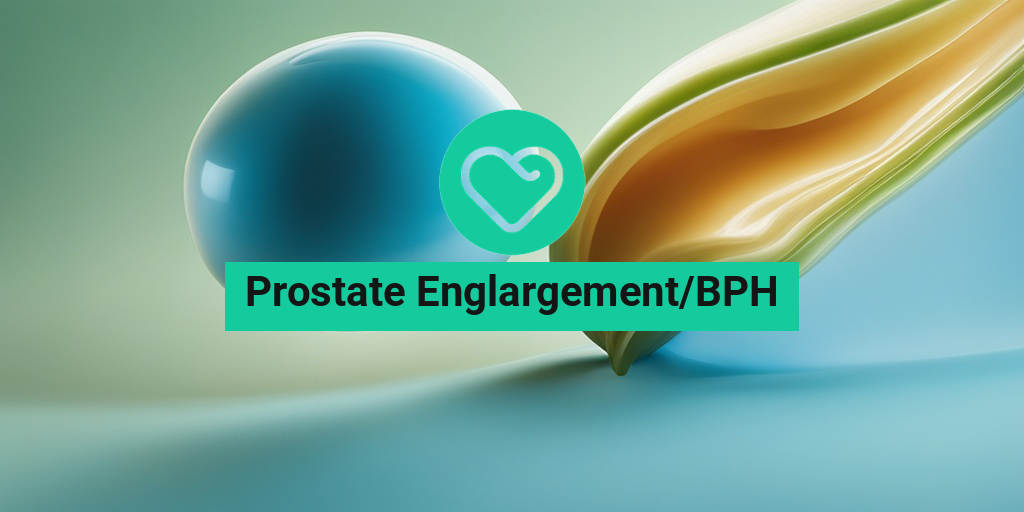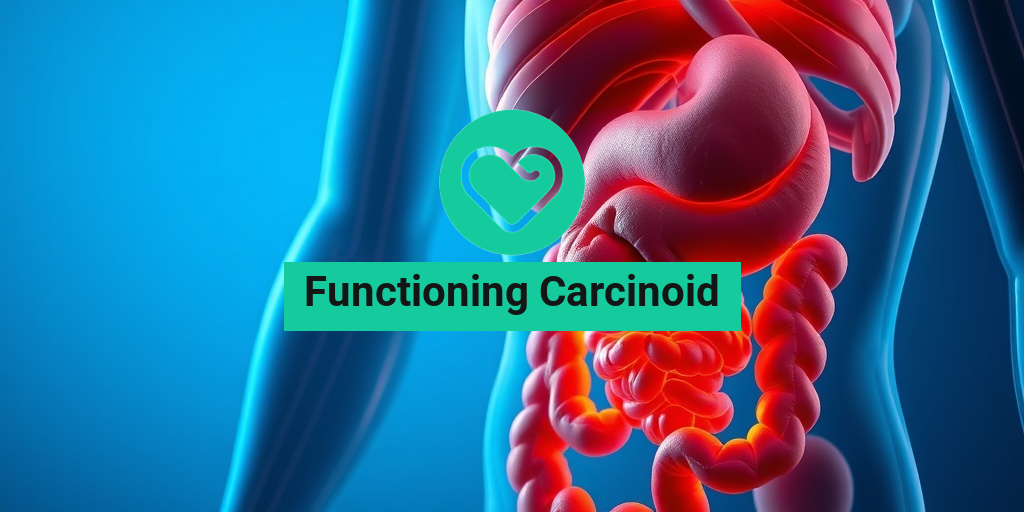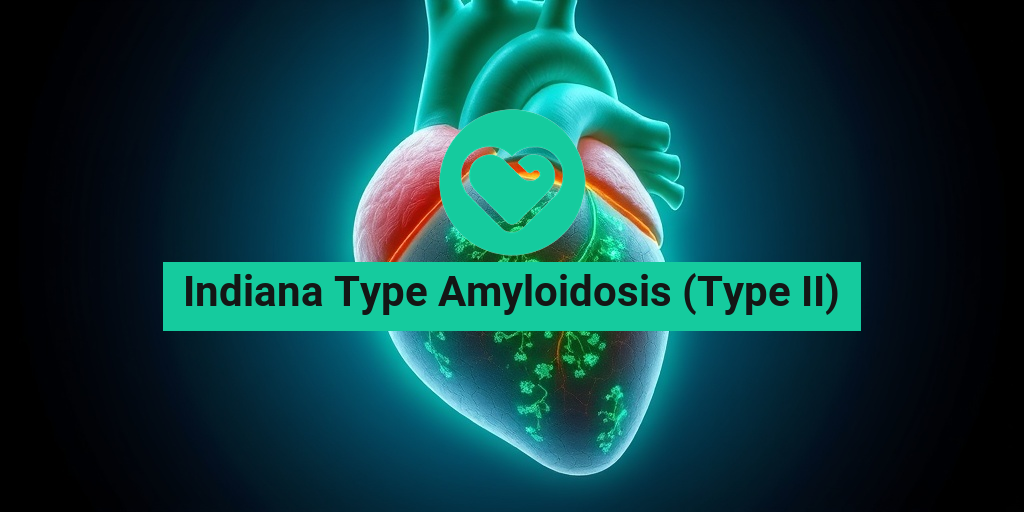“`html
Understanding Symptoms, Causes, and Treatments
Prostate enlargement, medically known as Benign Prostatic Hyperplasia (BPH), is a common condition that affects many men as they age. Understanding the symptoms, causes, and available treatments can empower you to take control of your health. Let’s dive deeper into this condition.
Symptoms of BPH
Many men experience symptoms of BPH, which can significantly impact their quality of life. Common symptoms include:
- Frequent urination: Needing to urinate more often, especially at night (nocturia).
- Weak urine stream: A decrease in the strength of the urine flow.
- Difficulty starting urination: Struggling to initiate urination.
- Incomplete bladder emptying: Feeling like the bladder is not fully emptied after urination.
- Urgency: A sudden, strong need to urinate.
If you notice any of these symptoms, it’s essential to consult a healthcare professional for a proper diagnosis and treatment plan.
Causes of BPH
The exact cause of BPH is not entirely understood, but several factors may contribute to its development:
- Age: The risk of developing BPH increases as men get older.
- Hormonal changes: Changes in hormone levels, particularly testosterone and estrogen, may play a role.
- Family history: A family history of prostate problems can increase your risk.
- Health conditions: Conditions such as obesity, diabetes, and heart disease may also be linked to BPH.
Treatments for BPH
Fortunately, there are several treatment options available for managing BPH. These can be categorized into lifestyle changes, medications, and surgical procedures:
- Lifestyle changes: Reducing caffeine and alcohol intake, practicing bladder training, and maintaining a healthy weight can help alleviate symptoms.
- Medications: Alpha-blockers and 5-alpha-reductase inhibitors are commonly prescribed to help relax the bladder neck and reduce prostate size, respectively.
- Surgical options: In more severe cases, procedures such as Transurethral Resection of the Prostate (TURP) may be recommended to remove excess prostate tissue.
For personalized advice and evidence-based health answers, consider visiting Yesil Health AI. They provide valuable resources to help you understand your health better.
What Is BPH?
Benign Prostatic Hyperplasia (BPH) is a non-cancerous enlargement of the prostate gland. It is a common condition among older men, with studies showing that about 50% of men in their 50s and up to 90% of men in their 80s experience some degree of BPH. But what does this mean for your health?
Understanding the Prostate Gland
The prostate is a small gland located below the bladder and in front of the rectum. It plays a crucial role in the male reproductive system by producing seminal fluid, which nourishes and transports sperm. As men age, the prostate can grow larger, leading to BPH.
Is BPH the Same as an Enlarged Prostate?
Yes, BPH is essentially another term for an enlarged prostate. However, it’s important to note that not all cases of prostate enlargement are due to BPH. Other conditions, including prostate cancer, can also cause enlargement, which is why proper diagnosis is essential.
Can You Have BPH Without an Enlarged Prostate?
Generally, BPH is characterized by an enlarged prostate. However, some men may experience symptoms of BPH without significant enlargement. This can occur due to other factors affecting the bladder or urinary tract.
In conclusion, understanding BPH is vital for maintaining prostate health. If you experience symptoms or have concerns about your prostate, don’t hesitate to reach out to a healthcare professional. Remember, knowledge is power when it comes to your health! 💪
“`

“`html
BPH Symptoms
Benign Prostatic Hyperplasia (BPH), commonly known as prostate enlargement, is a condition that affects many men as they age. Understanding the symptoms of BPH is crucial for early detection and management. Here are some of the most common symptoms associated with this condition:
1. Frequent Urination
One of the hallmark symptoms of BPH is the need to urinate more often, especially during the night. This condition, known as nocturia, can disrupt sleep and lead to fatigue. Men may find themselves waking up multiple times at night to relieve themselves, which can be quite bothersome.
2. Urgency to Urinate
Along with frequent urination, many men experience a sudden and strong urge to urinate. This urgency can sometimes be difficult to control, leading to anxiety about finding a restroom in time.
3. Weak Urine Stream
Men with BPH often notice that their urine stream is weaker than it used to be. This can make it difficult to fully empty the bladder, leading to a feeling of incomplete urination.
4. Difficulty Starting Urination
Some men may find it challenging to initiate urination. This can be frustrating and may require straining or waiting for a few moments before the urine begins to flow.
5. Dribbling at the End of Urination
Post-urination dribbling is another common symptom. Men may notice that a few drops of urine leak out after they believe they have finished urinating, which can be embarrassing.
6. Painful Urination
While not as common, some men may experience pain or discomfort during urination. This symptom can indicate other underlying issues, so it’s essential to consult a healthcare provider if this occurs.
7. Blood in Urine
Seeing blood in the urine (hematuria) is a more serious symptom that requires immediate medical attention. It can indicate complications related to BPH or other urinary tract issues.
BPH Risk Factors
Understanding the risk factors associated with BPH can help men take proactive steps in managing their prostate health. Here are some key risk factors to consider:
1. Age
Age is the most significant risk factor for developing BPH. As men get older, the likelihood of experiencing prostate enlargement increases. Most men will have some degree of BPH by the age of 60, and the prevalence continues to rise with age.
2. Family History
If you have a family history of BPH or prostate problems, your risk may be higher. Genetics can play a role in the development of this condition, so it’s essential to be aware of your family’s medical history.
3. Obesity
Being overweight or obese can increase the risk of BPH. Excess body fat, particularly around the abdomen, may contribute to hormonal changes that affect prostate size.
4. Hormonal Changes
As men age, hormonal changes occur that can lead to prostate enlargement. An imbalance between testosterone and estrogen levels may contribute to the development of BPH.
5. Lifestyle Factors
Certain lifestyle choices can also impact the risk of BPH. A diet high in red meat and low in fruits and vegetables may increase the likelihood of developing this condition. Additionally, a sedentary lifestyle can contribute to obesity and other health issues.
6. Diabetes and Heart Disease
Men with diabetes or heart disease are at a higher risk for BPH. These conditions can affect hormone levels and blood flow, potentially leading to prostate enlargement.
7. Ethnicity
Research suggests that ethnicity may play a role in the risk of developing BPH. For instance, African American men are more likely to experience BPH compared to men of other ethnic backgrounds.
Recognizing the symptoms and understanding the risk factors of BPH can empower men to seek medical advice and take charge of their prostate health. If you experience any of the symptoms mentioned above, it’s essential to consult with a healthcare professional for proper evaluation and management. 🩺
“`

“`html
BPH Diagnosis
Benign Prostatic Hyperplasia (BPH), commonly referred to as prostate enlargement, is a condition that affects many men as they age. Understanding how BPH is diagnosed is crucial for effective management and treatment. Here’s a closer look at the diagnostic process.
Symptoms to Watch For
Before seeking a diagnosis, it’s important to recognize the symptoms associated with BPH. Common signs include:
- Frequent urination, especially at night (nocturia)
- Difficulty starting or stopping urination
- Weak or interrupted urine flow
- Feeling of incomplete bladder emptying
- Urgency to urinate
If you experience any of these symptoms, it may be time to consult a healthcare professional.
Initial Consultation
During your initial visit, your doctor will conduct a thorough medical history review and physical examination. This may include:
- A discussion of your symptoms and their impact on your daily life.
- A physical examination, including a digital rectal exam (DRE) to assess the size of the prostate.
Diagnostic Tests
To confirm a diagnosis of BPH, your doctor may recommend several tests, including:
- Urinalysis: This test checks for signs of infection or other conditions that may cause similar symptoms.
- Prostate-specific antigen (PSA) test: This blood test measures the level of PSA, which can be elevated in men with BPH or prostate cancer.
- Uroflowmetry: This test measures the flow rate of urine to assess how well the bladder is functioning.
- Post-void residual volume test: This test checks how much urine remains in the bladder after urination.
These tests help your doctor determine the severity of BPH and rule out other potential issues.
BPH Treatment Options
Once diagnosed, there are several treatment options available for managing BPH. The choice of treatment often depends on the severity of symptoms and the impact on your quality of life.
Lifestyle Changes
For mild symptoms, lifestyle modifications can be effective. Consider the following:
- Fluid management: Reducing fluid intake in the evening can help minimize nighttime urination.
- Dietary adjustments: A diet rich in fruits, vegetables, and healthy fats may support prostate health.
- Regular exercise: Staying active can improve overall health and potentially alleviate some symptoms.
Medications
If lifestyle changes are insufficient, medications may be prescribed. Common options include:
- Alpha-blockers: These medications relax the muscles around the prostate and bladder neck, making urination easier.
- 5-alpha-reductase inhibitors: These drugs can shrink the prostate over time by blocking the hormone responsible for prostate growth.
It’s essential to discuss potential side effects and benefits with your healthcare provider.
Minimally Invasive Procedures
For moderate to severe symptoms, minimally invasive procedures may be recommended. These include:
- Transurethral resection of the prostate (TURP): This surgical procedure removes part of the prostate to relieve pressure on the urethra.
- Laser therapy: This technique uses focused light to remove or destroy excess prostate tissue.
These options can provide significant relief from symptoms and improve quality of life.
Surgical Options
In severe cases, more invasive surgical options may be necessary. These include:
- Open prostatectomy: This is a traditional surgical approach to remove the prostate.
- Robotic-assisted prostatectomy: A minimally invasive technique that uses robotic technology for precision.
These surgeries are typically reserved for cases where other treatments have failed or when symptoms are particularly severe.
Understanding the diagnosis and treatment options for BPH is essential for managing this common condition effectively. If you suspect you have BPH, don’t hesitate to reach out to a healthcare professional for guidance and support. 🩺
“`

“`html
BPH Lifestyle Changes
Benign Prostatic Hyperplasia (BPH), commonly known as prostate enlargement, can significantly impact a man’s quality of life. Fortunately, making certain lifestyle changes can help manage symptoms and improve overall well-being. Here are some effective strategies to consider:
1. Diet Modifications
Your diet plays a crucial role in managing BPH symptoms. Incorporating specific foods can help reduce inflammation and support prostate health. Consider the following dietary changes:
- Increase Fruits and Vegetables: Aim for a variety of colorful fruits and vegetables, which are rich in antioxidants and essential nutrients.
- Healthy Fats: Include sources of omega-3 fatty acids, such as fish, walnuts, and flaxseeds, which can help reduce inflammation.
- Limit Red Meat and Processed Foods: These can exacerbate symptoms, so try to reduce your intake.
- Stay Hydrated: Drink plenty of water throughout the day, but consider reducing fluid intake in the evening to minimize nighttime bathroom trips.
2. Regular Exercise
Physical activity is essential for maintaining a healthy weight and reducing BPH symptoms. Regular exercise can help improve circulation and hormone balance. Here are some tips:
- Aerobic Activities: Engage in activities like walking, jogging, or swimming for at least 150 minutes a week.
- Strength Training: Incorporate strength training exercises at least twice a week to build muscle and support overall health.
- Pelvic Floor Exercises: Kegel exercises can strengthen pelvic muscles and improve bladder control.
3. Stress Management
Stress can exacerbate BPH symptoms, so finding effective ways to manage stress is vital. Consider these techniques:
- Meditation and Mindfulness: Practicing mindfulness can help reduce anxiety and improve your overall mental health.
- Yoga: This can enhance flexibility and promote relaxation, which may alleviate some BPH symptoms.
- Deep Breathing Exercises: Simple breathing techniques can help calm your mind and reduce stress levels.
4. Avoiding Irritants
Certain substances can irritate the bladder and worsen BPH symptoms. It’s advisable to limit or avoid:
- Caffeine: Found in coffee, tea, and some sodas, caffeine can increase urinary urgency.
- Alcohol: Alcohol can irritate the bladder and lead to increased frequency of urination.
- Spicy Foods: These can also irritate the bladder and should be consumed in moderation.
BPH Complications
While BPH is a common condition, it can lead to various complications if left untreated. Understanding these potential issues is crucial for proactive management. Here are some complications associated with BPH:
1. Urinary Tract Infections (UTIs)
When the prostate enlarges, it can obstruct the flow of urine, leading to incomplete bladder emptying. This can increase the risk of urinary tract infections, which may cause symptoms like:
- Frequent urination
- Painful urination
- Cloudy or foul-smelling urine
2. Bladder Stones
Increased urinary retention can lead to the formation of bladder stones, which can cause:
- Severe pain
- Difficulty urinating
- Blood in urine
Bladder stones may require surgical intervention for removal.
3. Acute Urinary Retention
This is a sudden inability to urinate, which can be a medical emergency. Symptoms include:
- Severe discomfort in the lower abdomen
- Inability to pass urine
Acute urinary retention often requires immediate medical attention to relieve the blockage.
4. Kidney Damage
Chronic urinary retention can lead to kidney damage over time. If urine backs up into the kidneys, it can cause:
- Kidney infections
- Kidney failure
Regular monitoring and management of BPH symptoms are essential to prevent such complications.
5. Impact on Quality of Life
Beyond physical complications, BPH can significantly affect emotional and mental well-being. Symptoms such as frequent urination and urgency can lead to:
- Sleep disturbances
- Anxiety and depression
- Social withdrawal
Addressing BPH symptoms through lifestyle changes and medical intervention can help improve overall quality of life.
“`

“`html
Frequently Asked Questions about Prostate Enlargement
What is Prostate Enlargement?
Prostate enlargement, often referred to as benign prostatic hyperplasia (BPH), is a condition where the prostate gland increases in size. This can lead to various urinary symptoms due to the pressure it exerts on the urethra.
Can you have BPH without an enlarged prostate?
Yes, it is possible to experience symptoms associated with BPH without a significantly enlarged prostate. Some individuals may have symptoms due to other factors, such as inflammation or other urinary tract issues.
What is the normal size of a prostate?
The normal size of a prostate gland is typically about the size of a walnut, measuring approximately 20-30 grams. However, size can vary among individuals, and enlargement can occur with age.
Is BPH the same as an enlarged prostate?
Yes, BPH is commonly referred to as an enlarged prostate. However, not all cases of prostate enlargement are due to BPH; other conditions can also cause an increase in prostate size.
What are the grading systems for prostate enlargement?
Grading systems for prostate enlargement help in assessing the severity of the condition. These systems often consider factors such as urinary symptoms, prostate size, and the impact on quality of life. Consult a healthcare provider for specific grading relevant to your situation.
What are the common symptoms of prostate enlargement?
- Frequent urination, especially at night 🌙
- Difficulty starting or stopping urination
- Weak or interrupted urine flow
- Sensation of incomplete bladder emptying
- Urgency to urinate
How is prostate enlargement diagnosed?
Diagnosis typically involves a combination of a physical examination, medical history review, and tests such as a digital rectal exam (DRE), urine tests, and possibly imaging studies.
What treatment options are available for prostate enlargement?
Treatment options for prostate enlargement may include:
- Medications to relieve symptoms
- Minimally invasive procedures
- Surgery in severe cases
It’s essential to discuss with a healthcare provider to determine the best treatment plan based on individual needs.
Can lifestyle changes help manage prostate enlargement symptoms?
Yes, certain lifestyle changes can help alleviate symptoms, including:
- Reducing caffeine and alcohol intake
- Practicing bladder training techniques
- Maintaining a healthy weight
- Staying physically active
Consulting with a healthcare professional can provide personalized recommendations.
“`




